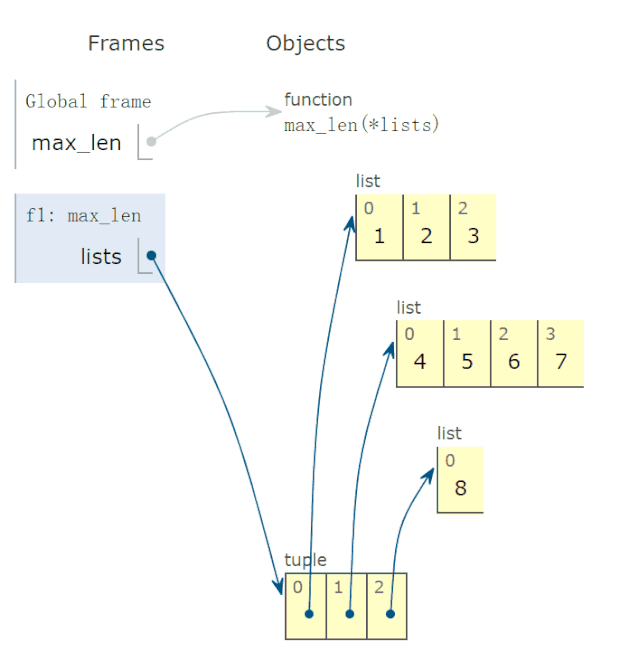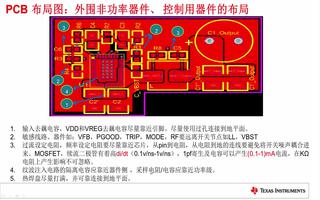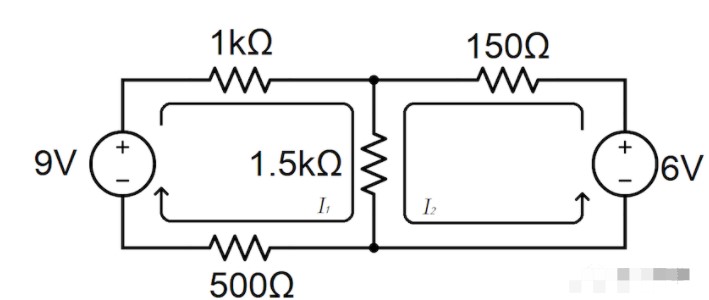一、 數(shù)字
1 求絕對值
絕對值或復數(shù)的模
?
In [1]: abs(-6) Out[1]: 6
?
2 進制轉化
十進制轉換為二進制:
?
In [2]: bin(10) Out[2]: '0b1010'十進制轉換為八進制:
In [3]: oct(9) Out[3]: '0o11'十進制轉換為十六進制:
In [4]: hex(15) Out[4]: '0xf'
?
3 整數(shù)和ASCII互轉
十進制整數(shù)對應的ASCII字符
?
In [1]: chr(65) Out[1]: 'A'查看某個ASCII字符對應的十進制數(shù)
In [1]: ord('A') Out[1]: 65
?
4 元素都為真檢查
所有元素都為真,返回?True,否則為False
?
In [5]: all([1,0,3,6]) Out[5]: False
In [6]: all([1,2,3]) Out[6]: True
?
5 元素至少一個為真檢查
至少有一個元素為真返回True,否則False
?
In [7]: any([0,0,0,[]]) Out[7]: False
In [8]: any([0,0,1]) Out[8]: True
?
6 判斷是真是假
測試一個對象是True, 還是False.
?
In [9]: bool([0,0,0]) Out[9]: True In [10]: bool([]) Out[10]: False In [11]: bool([1,0,1]) Out[11]: True
?
7 創(chuàng)建復數(shù)
創(chuàng)建一個復數(shù)
?
In [1]: complex(1,2) Out[1]: (1+2j)
?
8 取商和余數(shù)
分別取商和余數(shù)
?
In [1]: divmod(10,3) Out[1]: (3, 1)
?
9 轉為浮點類型
將一個整數(shù)或數(shù)值型字符串轉換為浮點數(shù)
?
In [1]: float(3) Out[1]: 3.0如果不能轉化為浮點數(shù),則會報ValueError:
In [2]: float('a')
# ValueError: could not convert string to float: 'a'
?
10 轉為整型
int(x, base =10) , x可能為字符串或數(shù)值,將x 轉換為一個普通整數(shù)。如果參數(shù)是字符串,那么它可能包含符號和小數(shù)點。如果超出了普通整數(shù)的表示范圍,一個長整數(shù)被返回。
?
In [1]: int('12',16)
Out[1]: 18
?
11 次冪
base為底的exp次冪,如果mod給出,取余
?
In [1]: pow(3, 2, 4) Out[1]: 1
?
12 四舍五入
四舍五入,ndigits代表小數(shù)點后保留幾位:
?
In [11]: round(10.0222222, 3) Out[11]: 10.022 In [12]: round(10.05,1) Out[12]: 10.1
?
13 鏈式比較
?
i = 3 print(1 < i < 3) # False print(1 < i <= 3) # True
?
二、 字符串
14 字符串轉字節(jié)
字符串轉換為字節(jié)類型
?
In [12]: s = "apple" In [13]: bytes(s,encoding='utf-8') Out[13]: b'apple'
?
15 任意對象轉為字符串
?
In [14]: i = 100 In [15]: str(i) Out[15]: '100' In [16]: str([]) Out[16]: '[]' In [17]: str(tuple()) Out[17]: '()'
?
16 執(zhí)行字符串表示的代碼
將字符串編譯成python能識別或可執(zhí)行的代碼,也可以將文字讀成字符串再編譯。
?
In [1]: s = "print('helloworld')"
In [2]: r = compile(s,"", "exec")
In [3]: r
Out[3]: at 0x0000000005DE75D0, file "", line 1>
In [4]: exec(r)
helloworld
?
17 計算表達式
將字符串str 當成有效的表達式來求值并返回計算結果取出字符串中內(nèi)容
?
In [1]: s = "1 + 3 +5"
...: eval(s)
...:
Out[1]: 9
?
18 字符串格式化
格式化輸出字符串,format(value, format_spec)實質(zhì)上是調(diào)用了value的__format__(format_spec)方法。
?
In [104]: print("i am {0},age{1}".format("tom",18))
i am tom,age18
?
| 3.1415926 | {:.2f} | 3.14 | 保留小數(shù)點后兩位 |
|---|---|---|---|
| 3.1415926 | {:+.2f} | +3.14 | 帶符號保留小數(shù)點后兩位 |
| -1 | {:+.2f} | -1.00 | 帶符號保留小數(shù)點后兩位 |
| 2.71828 | {:.0f} | 3 | 不帶小數(shù) |
| 5 | {:0>2d} | 05 | 數(shù)字補零 (填充左邊, 寬度為2) |
| 5 | {:x<4d} | 5xxx | 數(shù)字補x (填充右邊, 寬度為4) |
| 10 | {:x<4d} | 10xx | 數(shù)字補x (填充右邊, 寬度為4) |
| 1000000 | {:,} | 1,000,000 | 以逗號分隔的數(shù)字格式 |
| 0.25 | {:.2%} | 25.00% | 百分比格式 |
| 1000000000 | {:.2e} | 1.00e+09 | 指數(shù)記法 |
| 18 | {:>10d} | ' 18' | 右對齊 (默認, 寬度為10) |
| 18 | {:<10d} | '18 ' | 左對齊 (寬度為10) |
| 18 | {:^10d} | ' 18 ' | 中間對齊 (寬度為10) |
三、 函數(shù)
19 拿來就用的排序函數(shù)
排序:
?
In [1]: a = [1,4,2,3,1]
In [2]: sorted(a,reverse=True)
Out[2]: [4, 3, 2, 1, 1]
In [3]: a = [{'name':'xiaoming','age':18,'gender':'male'},{'name':'
...: xiaohong','age':20,'gender':'female'}]
In [4]: sorted(a,key=lambda x: x['age'],reverse=False)
Out[4]:
[{'name': 'xiaoming', 'age': 18, 'gender': 'male'},
{'name': 'xiaohong', 'age': 20, 'gender': 'female'}]
?
20 求和函數(shù)
求和:
?
In [181]: a = [1,4,2,3,1] In [182]: sum(a) Out[182]: 11 In [185]: sum(a,10) #求和的初始值為10 Out[185]: 21
?
21 nonlocal用于內(nèi)嵌函數(shù)中
關鍵詞nonlocal常用于函數(shù)嵌套中,聲明變量i為非局部變量;如果不聲明,i+=1表明i為函數(shù)wrapper內(nèi)的局部變量,因為在i+=1引用(reference)時,i未被聲明,所以會報unreferenced variable的錯誤。
?
def excepter(f):
i = 0
t1 = time.time()
def wrapper():
try:
f()
except Exception as e:
nonlocal i
i += 1
print(f'{e.args[0]}: {i}')
t2 = time.time()
if i == n:
print(f'spending time:{round(t2-t1,2)}')
return wrapper
?
22 global 聲明全局變量
先回答為什么要有global,一個變量被多個函數(shù)引用,想讓全局變量被所有函數(shù)共享。有的伙伴可能會想這還不簡單,這樣寫:
?
i = 5
def f():
print(i)
def g():
print(i)
pass
f()
g()
f和g兩個函數(shù)都能共享變量i,程序沒有報錯,所以他們依然不明白為什么要用global.
?
但是,如果我想要有個函數(shù)對i遞增,這樣:
?
def h():
i += 1
h()
此時執(zhí)行程序,bang, 出錯了!拋出異常:UnboundLocalError,原來編譯器在解釋i+=1時會把i解析為函數(shù)h()內(nèi)的局部變量,很顯然在此函數(shù)內(nèi),編譯器找不到對變量i的定義,所以會報錯。
?
global就是為解決此問題而被提出,在函數(shù)h內(nèi),顯式地告訴編譯器i為全局變量,然后編譯器會在函數(shù)外面尋找i的定義,執(zhí)行完i+=1后,i還為全局變量,值加1:
?
i = 0
def h():
global i
i += 1
h()
print(i)
?
23 交換兩元素
?
def swap(a, b):
return b, a
print(swap(1, 0)) # (0,1)
?
24 操作函數(shù)對象
?
In [31]: def f():
...: print('i'm f')
...:
In [32]: def g():
...: print('i'm g')
...:
In [33]: [f,g][1]()
i'm g
創(chuàng)建函數(shù)對象的list,根據(jù)想要調(diào)用的index,方便統(tǒng)一調(diào)用。
?
25 生成逆序序列
?
list(range(10,-1,-1)) # [10, 9, 8, 7, 6, 5, 4, 3, 2, 1, 0]第三個參數(shù)為負時,表示從第一個參數(shù)開始遞減,終止到第二個參數(shù)(不包括此邊界)
?
26 函數(shù)的五類參數(shù)使用例子
python五類參數(shù):位置參數(shù),關鍵字參數(shù),默認參數(shù),可變位置或關鍵字參數(shù)的使用。
?
def f(a,*b,c=10,**d):
print(f'a:{a},b:{b},c:{c},d:3z7dhrbd')
默認參數(shù)c不能位于可變關鍵字參數(shù)d后.
?
調(diào)用f:
?
In [10]: f(1,2,5,width=10,height=20)
a:1,b:(2, 5),c:10,d:{'width': 10, 'height': 20}
可變位置參數(shù)b實參后被解析為元組(2,5);而c取得默認值10; d被解析為字典.
?
再次調(diào)用f:
?
In [11]: f(a=1,c=12)
a:1,b:(),c:12,d:{}
a=1傳入時a就是關鍵字參數(shù),b,d都未傳值,c被傳入12,而非默認值。
?
注意觀察參數(shù)a, 既可以f(1),也可以f(a=1)?其可讀性比第一種更好,建議使用f(a=1)。如果要強制使用f(a=1),需要在前面添加一個星號:
?
def f(*,a,**b):
print(f'a:{a},b:{b}')
?
此時f(1)調(diào)用,將會報錯:TypeError: f() takes 0 positional arguments but 1 was given
只能f(a=1)才能OK.
說明前面的*發(fā)揮作用,它變?yōu)橹荒軅魅腙P鍵字參數(shù),那么如何查看這個參數(shù)的類型呢?借助python的inspect模塊:
?
In [22]: for name,val in signature(f).parameters.items(): ...: print(name,val.kind) ...: a KEYWORD_ONLY b VAR_KEYWORD可看到參數(shù)a的類型為KEYWORD_ONLY,也就是僅僅為關鍵字參數(shù)。
?
但是,如果f定義為:
?
def f(a,*b):
print(f'a:{a},b:{b}')
查看參數(shù)類型:
In [24]: for name,val in signature(f).parameters.items():
...: print(name,val.kind)
...:
a POSITIONAL_OR_KEYWORD
b VAR_POSITIONAL
可以看到參數(shù)a既可以是位置參數(shù)也可是關鍵字參數(shù)。
?
27使用slice對象
生成關于蛋糕的序列cake1:
?
In [1]: cake1 = list(range(5,0,-1)) In [2]: b = cake1[1:10:2] In [3]: b Out[3]: [4, 2] In [4]: cake1 Out[4]: [5, 4, 3, 2, 1]再生成一個序列:
In [5]: from random import randint ...: cake2 = [randint(1,100) for _ in range(100)] ...: # 同樣以間隔為2切前10個元素,得到切片d ...: d = cake2[1:10:2] In [6]: d Out[6]: [75, 33, 63, 93, 15]你看,我們使用同一種切法,分別切開兩個蛋糕cake1,cake2. 后來發(fā)現(xiàn)這種切法極為經(jīng)典,又拿它去切更多的容器對象。
?
那么,為什么不把這種切法封裝為一個對象呢?于是就有了slice對象。
定義slice對象極為簡單,如把上面的切法定義成slice對象:
?
perfect_cake_slice_way = slice(1,10,2) #去切cake1 cake1_slice = cake1[perfect_cake_slice_way] cake2_slice = cake2[perfect_cake_slice_way] In [11]: cake1_slice Out[11]: [4, 2] In [12]: cake2_slice Out[12]: [75, 33, 63, 93, 15]與上面的結果一致。
?
對于逆向序列切片,slice對象一樣可行:
?
a = [1,3,5,7,9,0,3,5,7] a_ = a[5:1:-1] named_slice = slice(5,1,-1) a_slice = a[named_slice] In [14]: a_ Out[14]: [0, 9, 7, 5] In [15]: a_slice Out[15]: [0, 9, 7, 5]頻繁使用同一切片的操作可使用slice對象抽出來,復用的同時還能提高代碼可讀性。
?
28 lambda 函數(shù)的動畫演示
有些讀者反映,lambda函數(shù)不太會用,問我能不能解釋一下。
比如,下面求這個?lambda函數(shù):
?
def max_len(*lists):
return max(*lists, key=lambda v: len(v))
有兩點疑惑:
?
參數(shù)v的取值?
lambda函數(shù)有返回值嗎?如果有,返回值是多少?
調(diào)用上面函數(shù),求出以下三個最長的列表:
?
r = max_len([1, 2, 3], [4, 5, 6, 7], [8])
print(f'更長的列表是{r}')
程序完整運行過程,動畫演示如下:
?

結論:
參數(shù)v的可能取值為*lists,也就是?tuple?的一個元素。
lambda函數(shù)返回值,等于lambda v冒號后表達式的返回值。
四、 數(shù)據(jù)結構
29 轉為字典
創(chuàng)建數(shù)據(jù)字典
?
In [1]: dict()
Out[1]: {}
In [2]: dict(a='a',b='b')
Out[2]: {'a': 'a', 'b': 'b'}
In [3]: dict(zip(['a','b'],[1,2]))
Out[3]: {'a': 1, 'b': 2}
In [4]: dict([('a',1),('b',2)])
Out[4]: {'a': 1, 'b': 2}
?
30 凍結集合
創(chuàng)建一個不可修改的集合。
?
In [1]: frozenset([1,1,3,2,3])
Out[1]: frozenset({1, 2, 3})
因為不可修改,所以沒有像set那樣的add和pop方法
?
31 轉為集合類型
返回一個set對象,集合內(nèi)不允許有重復元素:
?
In [159]: a = [1,4,2,3,1]
In [160]: set(a)
Out[160]: {1, 2, 3, 4}
?
32 轉為切片對象
class?slice(start,?stop[,?step])
返回一個表示由 range(start, stop, step) 所指定索引集的 slice對象,它讓代碼可讀性、可維護性變好。
?
In [1]: a = [1,4,2,3,1] In [2]: my_slice_meaning = slice(0,5,2) In [3]: a[my_slice_meaning] Out[3]: [1, 2, 1]
?
33 轉元組
tuple()?將對象轉為一個不可變的序列類型
?
In [16]: i_am_list = [1,3,5] In [17]: i_am_tuple = tuple(i_am_list) In [18]: i_am_tuple Out[18]: (1, 3, 5)
?
五、 類和對象
34 是否可調(diào)用
檢查對象是否可被調(diào)用
?
In [1]: callable(str) Out[1]: True In [2]: callable(int) Out[2]: True
In [18]: class Student():
...: def __init__(self,id,name):
...: self.id = id
...: self.name = name
...: def __repr__(self):
...: return 'id = '+self.id +', name = '+self.name
...
In [19]: xiaoming = Student('001','xiaoming')
In [20]: callable(xiaoming)
Out[20]: False
如果能調(diào)用xiaoming(), 需要重寫Student類的__call__方法:
In [1]: class Student():
...: def __init__(self,id,name):
...: self.id = id
...: self.name = name
...: def __repr__(self):
...: return 'id = '+self.id +', name = '+self.name
...: def __call__(self):
...: print('I can be called')
...: print(f'my name is {self.name}')
...:
In [2]: t = Student('001','xiaoming')
In [3]: t()
I can be called
my name is xiaoming
?
35 ascii 展示對象
調(diào)用對象的?__repr__?方法,獲得該方法的返回值,如下例子返回值為字符串
?
>>> class Student():
def __init__(self,id,name):
self.id = id
self.name = name
def __repr__(self):
return 'id = '+self.id +', name = '+self.name
?
調(diào)用:
?
>>> xiaoming = Student(id='1',name='xiaoming') >>> xiaoming id = 1, name = xiaoming >>> ascii(xiaoming) 'id = 1, name = xiaoming'
?
36 類方法
classmethod?裝飾器對應的函數(shù)不需要實例化,不需要?self?參數(shù),但第一個參數(shù)需要是表示自身類的 cls 參數(shù),可以來調(diào)用類的屬性,類的方法,實例化對象等。
?
In [1]: class Student():
...: def __init__(self,id,name):
...: self.id = id
...: self.name = name
...: def __repr__(self):
...: return 'id = '+self.id +', name = '+self.name
...: @classmethod
...: def f(cls):
...: print(cls)
?
37 動態(tài)刪除屬性
刪除對象的屬性
?
In [1]: delattr(xiaoming,'id') In [2]: hasattr(xiaoming,'id') Out[2]: False
?
38 一鍵查看對象所有方法
不帶參數(shù)時返回當前范圍內(nèi)的變量、方法和定義的類型列表;帶參數(shù)時返回參數(shù)的屬性,方法列表。
?
In [96]: dir(xiaoming) Out[96]: ['__class__', '__delattr__', '__dict__', '__dir__', '__doc__', '__eq__', '__format__', '__ge__', '__getattribute__', '__gt__', '__hash__', '__init__', '__init_subclass__', '__le__', '__lt__', '__module__', '__ne__', '__new__', '__reduce__', '__reduce_ex__', '__repr__', '__setattr__', '__sizeof__', '__str__', '__subclasshook__', '__weakref__', 'name']
?
39 動態(tài)獲取對象屬性
獲取對象的屬性
?
In [1]: class Student(): ...: def __init__(self,id,name): ...: self.id = id ...: self.name = name ...: def __repr__(self): ...: return 'id = '+self.id +', name = '+self.name In [2]: xiaoming = Student(id='001',name='xiaoming') In [3]: getattr(xiaoming,'name') # 獲取xiaoming這個實例的name屬性值 Out[3]: 'xiaoming'
?
40 對象是否有這個屬性
?
In [1]: class Student(): ...: def __init__(self,id,name): ...: self.id = id ...: self.name = name ...: def __repr__(self): ...: return 'id = '+self.id +', name = '+self.name In [2]: xiaoming = Student(id='001',name='xiaoming') In [3]: hasattr(xiaoming,'name') Out[3]: True In [4]: hasattr(xiaoming,'address') Out[4]: False
?
41 對象門牌號
返回對象的內(nèi)存地址
?
In [1]: id(xiaoming) Out[1]: 98234208
?
42 isinstance
判斷object是否為類classinfo的實例,是返回true
?
In [1]: class Student(): ...: def __init__(self,id,name): ...: self.id = id ...: self.name = name ...: def __repr__(self): ...: return 'id = '+self.id +', name = '+self.name In [2]: xiaoming = Student(id='001',name='xiaoming') In [3]: isinstance(xiaoming,Student) Out[3]: True
?
43 父子關系鑒定
?
In [1]: class undergraduate(Student):
...: def studyClass(self):
...: pass
...: def attendActivity(self):
...: pass
In [2]: issubclass(undergraduate,Student)
Out[2]: True
In [3]: issubclass(object,Student)
Out[3]: False
In [4]: issubclass(Student,object)
Out[4]: True
如果class是classinfo元組中某個元素的子類,也會返回True
In [1]: issubclass(int,(int,float)) Out[1]: True
?
44 所有對象之根
object 是所有類的基類
?
In [1]: o = object() In [2]: type(o) Out[2]: object
?
45 創(chuàng)建屬性的兩種方式
返回 property 屬性,典型的用法:
?
class C:
def __init__(self):
self._x = None
def getx(self):
return self._x
def setx(self, value):
self._x = value
def delx(self):
del self._x
# 使用property類創(chuàng)建 property 屬性
x = property(getx, setx, delx, "I'm the 'x' property.")
使用python裝飾器,實現(xiàn)與上完全一樣的效果代碼:
class C:
def __init__(self):
self._x = None
@property
def x(self):
return self._x
@x.setter
def x(self, value):
self._x = value
@x.deleter
def x(self):
del self._x
?
46 查看對象類型
class?type(name,?bases,?dict)
傳入一個參數(shù)時,返回?object?的類型:
?
In [1]: class Student(): ...: def __init__(self,id,name): ...: self.id = id ...: self.name = name ...: def __repr__(self): ...: return 'id = '+self.id +', name = '+self.name ...: In [2]: xiaoming = Student(id='001',name='xiaoming') In [3]: type(xiaoming) Out[3]: __main__.Student In [4]: type(tuple()) Out[4]: tuple
?
47 元類
xiaoming,?xiaohong,?xiaozhang?都是學生,這類群體叫做?Student.
Python 定義類的常見方法,使用關鍵字?class
?
In [36]: class Student(object):
...: pass
xiaoming,?xiaohong,?xiaozhang?是類的實例,則:
xiaoming = Student() xiaohong = Student() xiaozhang = Student()創(chuàng)建后,xiaoming 的?__class__?屬性,返回的便是?Student類
In [38]: xiaoming.__class__ Out[38]: __main__.Student問題在于,Student?類有?__class__屬性,如果有,返回的又是什么?
In [39]: xiaoming.__class__.__class__ Out[39]: type哇,程序沒報錯,返回?type
?
那么,我們不妨猜測:Student?類,類型就是?type,換句話說,Student類就是一個對象,它的類型就是?type,所以,Python 中一切皆對象,類也是對象
Python 中,將描述?Student?類的類被稱為:元類。
按照此邏輯延伸,描述元類的類被稱為:元元類,開玩笑了~ 描述元類的類也被稱為元類。
聰明的朋友會問了,既然?Student?類可創(chuàng)建實例,那么?type?類可創(chuàng)建實例嗎?如果能,它創(chuàng)建的實例就叫:類 了。你們真聰明!
說對了,type?類一定能創(chuàng)建實例,比如?Student?類了。
?
In [40]: Student = type('Student',(),{})
In [41]: Student
Out[41]: __main__.Student
它與使用?class?關鍵字創(chuàng)建的?Student?類一模一樣。
?
Python 的類,因為又是對象,所以和?xiaoming,xiaohong?對象操作相似。支持:
賦值
拷貝
添加屬性
作為函數(shù)參數(shù)
?
In [43]: StudentMirror = Student # 類直接賦值 # 類直接賦值 In [44]: Student.class_property = 'class_property' # 添加類屬性 In [46]: hasattr(Student, 'class_property') Out[46]: True元類,確實使用不是那么多,也許先了解這些,就能應付一些場合。就連 Python 界的領袖?Tim Peters?都說:
?
“元類就是深度的魔法,99%的用戶應該根本不必為此操心。
六、工具
48 枚舉對象
返回一個可以枚舉的對象,該對象的next()方法將返回一個元組。
?
In [1]: s = ["a","b","c"]
...: for i ,v in enumerate(s,1):
...: print(i,v)
...:
1 a
2 b
3 c
?
49 查看變量所占字節(jié)數(shù)
?
In [1]: import sys
In [2]: a = {'a':1,'b':2.0}
In [3]: sys.getsizeof(a) # 占用240個字節(jié)
Out[3]: 240
?
50 過濾器
在函數(shù)中設定過濾條件,迭代元素,保留返回值為True的元素:
?
In [1]: fil = filter(lambda x: x>10,[1,11,2,45,7,6,13]) In [2]: list(fil) Out[2]: [11, 45, 13]
?
51 返回對象的哈希值
返回對象的哈希值,值得注意的是自定義的實例都是可哈希的,list,?dict,?set等可變對象都是不可哈希的(unhashable)
?
In [1]: hash(xiaoming) Out[1]: 6139638 In [2]: hash([1,2,3]) # TypeError: unhashable type: 'list'
?
52 一鍵幫助
返回對象的幫助文檔
?
In [1]: help(xiaoming) Help on Student in module __main__ object: class Student(builtins.object) | Methods defined here: | | __init__(self, id, name) | | __repr__(self) | | Data descriptors defined here: | | __dict__ | dictionary for instance variables (if defined) | | __weakref__ | list of weak references to the object (if defined)
?
53 獲取用戶輸入
獲取用戶輸入內(nèi)容
?
In [1]: input() aa Out[1]: 'aa'
?
54 創(chuàng)建迭代器類型
使用iter(obj, sentinel), 返回一個可迭代對象, sentinel可省略(一旦迭代到此元素,立即終止)
?
In [1]: lst = [1,3,5]
In [2]: for i in iter(lst):
...: print(i)
...:
1
3
5
In [1]: class TestIter(object):
...: def __init__(self):
...: self.l=[1,3,2,3,4,5]
...: self.i=iter(self.l)
...: def __call__(self): #定義了__call__方法的類的實例是可調(diào)用的
...: item = next(self.i)
...: print ("__call__ is called,fowhich would return",item)
...: return item
...: def __iter__(self): #支持迭代協(xié)議(即定義有__iter__()函數(shù))
...: print ("__iter__ is called!!")
...: return iter(self.l)
In [2]: t = TestIter()
In [3]: t() # 因為實現(xiàn)了__call__,所以t實例能被調(diào)用
__call__ is called,which would return 1
Out[3]: 1
In [4]: for e in TestIter(): # 因為實現(xiàn)了__iter__方法,所以t能被迭代
...: print(e)
...:
__iter__ is called!!
1
3
2
3
4
5
?
55 打開文件
返回文件對象
?
In [1]: fo = open('D:/a.txt',mode='r', encoding='utf-8')
In [2]: fo.read()
Out[2]: 'ufefflife is not so long,
I use Python to play.'
mode取值表:
?
| 字符 | 意義 |
|---|---|
| 'r' | 讀取(默認) |
| 'w' | 寫入,并先截斷文件 |
| 'x' | 排它性創(chuàng)建,如果文件已存在則失敗 |
| 'a' | 寫入,如果文件存在則在末尾追加 |
| 'b' | 二進制模式 |
| 't' | 文本模式(默認) |
| '+' | 打開用于更新(讀取與寫入) |
56 創(chuàng)建range序列
range(stop)
range(start, stop[,step])
生成一個不可變序列:
?
In [1]: range(11) Out[1]: range(0, 11) In [2]: range(0,11,1) Out[2]: range(0, 11)
?
57 反向迭代器
?
In [1]: rev = reversed([1,4,2,3,1])
In [2]: for i in rev:
...: print(i)
...:
1
3
2
4
1
?
58 聚合迭代器
創(chuàng)建一個聚合了來自每個可迭代對象中的元素的迭代器:
?
In [1]: x = [3,2,1]
In [2]: y = [4,5,6]
In [3]: list(zip(y,x))
Out[3]: [(4, 3), (5, 2), (6, 1)]
In [4]: a = range(5)
In [5]: b = list('abcde')
In [6]: b
Out[6]: ['a', 'b', 'c', 'd', 'e']
In [7]: [str(y) + str(x) for x,y in zip(a,b)]
Out[7]: ['a0', 'b1', 'c2', 'd3', 'e4']
?
59 鏈式操作
?
from operator import (add, sub)
def add_or_sub(a, b, oper):
return (add if oper == '+' else sub)(a, b)
add_or_sub(1, 2, '-') # -1
?
60 對象序列化
對象序列化,是指將內(nèi)存中的對象轉化為可存儲或傳輸?shù)倪^程。很多場景,直接一個類對象,傳輸不方便。
但是,當對象序列化后,就會更加方便,因為約定俗成的,接口間的調(diào)用或者發(fā)起的 web 請求,一般使用 json 串傳輸。
實際使用中,一般對類對象序列化。先創(chuàng)建一個 Student 類型,并創(chuàng)建兩個實例。
?
class Student():
def __init__(self,**args):
self.ids = args['ids']
self.name = args['name']
self.address = args['address']
xiaoming = Student(ids = 1,name = 'xiaoming',address = '北京')
xiaohong = Student(ids = 2,name = 'xiaohong',address = '南京')
導入 json 模塊,調(diào)用 dump 方法,就會將列表對象 [xiaoming,xiaohong],序列化到文件 json.txt 中。
import json
with open('json.txt', 'w') as f:
json.dump([xiaoming,xiaohong], f, default=lambda obj: obj.__dict__, ensure_ascii=False, indent=2, sort_keys=True)
生成的文件內(nèi)容,如下:
[
{
"address":"北京",
"ids":1,
"name":"xiaoming"
},
{
"address":"南京",
"ids":2,
"name":"xiaohong"
}
]
?
?
?
 電子發(fā)燒友App
電子發(fā)燒友App























評論